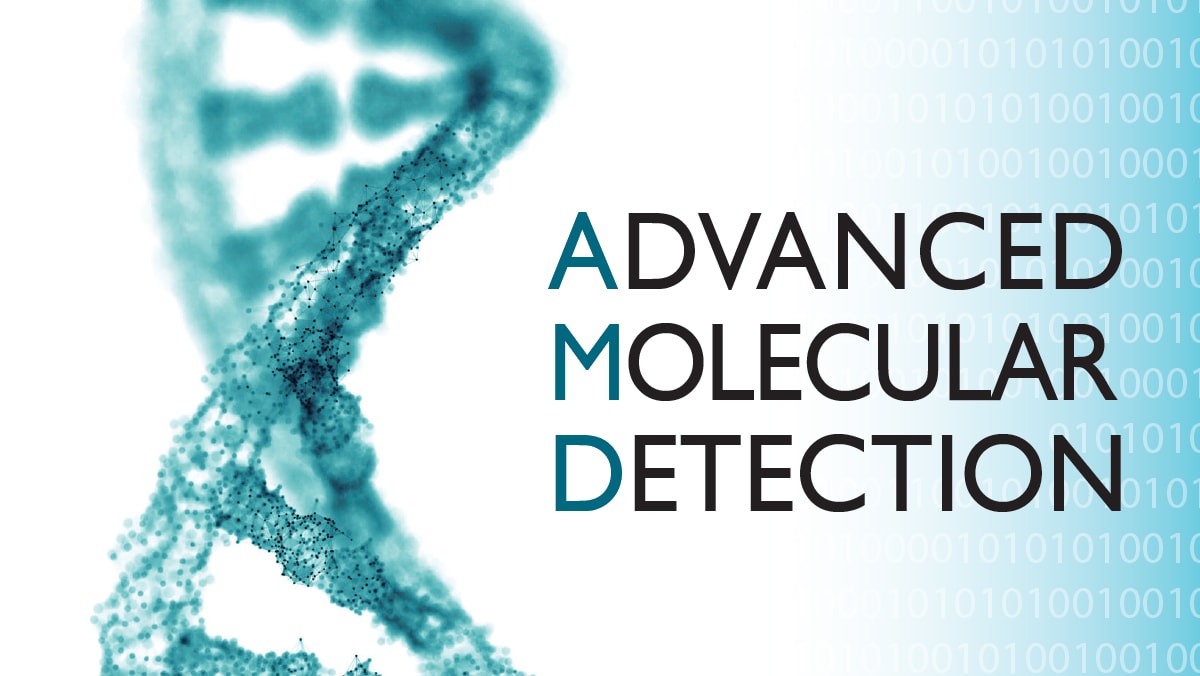Purpose
- Advanced molecular detection (AMD) harnesses the power of next-generation genomic sequencing, high-performance computing, and epidemiology to study pathogens and improve public health response.
- CDC is helping modernize the public health system's disease-investigation capabilities by employing the latest technologies and improving AMD capacity throughout the nation.

Why we're here
The AMD program is helping to modernize disease-investigation capabilities by building and integrating laboratory, bioinformatics, and epidemiology technologies across CDC and in state and local public health systems. These modern tools deliver a greater level of detailed information on infectious pathogens than older, slower, and less cost-effective methods.
The AMD program works with experts across CDC to ensure the United States has the infrastructure and technology needed to protect Americans from infectious disease threats. The AMD program collaborates with other CDC programs to facilitate development and pilot testing of next-generation diagnostic tests and protocols. Programs throughout CDC leverage these tools against a variety of infectious pathogens and also help state and local public health agencies tap into them.
The impact of AMD on public health
Identifying emerging pathogens
Studying the genetic makeup of microorganisms helps us identify and track rare or dangerous pathogens, such as Ebola and Zika viruses.
Improving vaccines
Applying AMD to vaccine-preventable diseases, such as pertussis and influenza, helps us monitor genetic changes and understand why vaccine effectiveness may decrease.
Solving outbreaks
State-of-the-art AMD methods help solve outbreaks faster by identifying the source of contamination so that public health programs can prevent additional illnesses.
Developing faster tests
AMD leads to more rapid and accurate tests to diagnose respiratory infections and to detect antimicrobial resistance.
Connecting the dots
AMD connects information from public health investigations with genomic data from pathogens to help us better understand how an infection is spreading.
Priorities
Since 2014, AMD's experts have been supporting the use of these tools and technologies to help modernize disease-investigation capabilities in the United States, while building and integrating laboratory, bioinformatics, and epidemiology technologies across CDC and in state and local public health systems.
- Sequencing is broadly applicable to many types of infectious diseases. The genomic applications for each of these are built on central concepts, but each can have unique uses.
- Over the years, one of AMD's primary roles has been to help develop, standardize, and refine tools for genomic epidemiology – across epidemiology, lab, and bioinformatics – to make sure our infectious disease programs know how to apply these disciplines and bring them together effectively to maximize impact.
Through partnerships at the federal, state, and local level, and increasingly with academia and other sectors, AMD is driving innovation for public health application and working to use these methods to improve our public health impact and keep people healthy.
AMD Technologies
The AMD program is helping build and integrate laboratory, bioinformatics, and epidemiology technologies across CDC and nationwide. Building capacity in all three areas is necessary for creating a 21st century public health detection and surveillance system to protect the United States from disease threats.
Laboratory Techniques
AMD technologies include laboratory methods to extract and sequence the DNA of pathogens, including next-generation sequencing and whole genome sequencing. Sequencing technologies range from portable sequencers for field-based testing to benchtop and full-sized sequencers for laboratory use.
Epidemiology
Epidemiologists help detect where data from their traditional field investigations intersect with genomic data to pinpoint disease outbreaks and clusters of human illnesses. Through training in molecular epidemiology, CDC is helping build on the existing epidemiology workforce so that they can use genomic data generated and analyzed through bioinformatics pipelines to help solve outbreak mysteries.
Bioinformatics
Even though infectious pathogens are small, sequencing their DNA generates a tremendous amount of genomic data. To analyze those data, experts in bioinformatics use high-performance computing systems to devise programs, often called pipelines. Once designed and validated, these pipelines can speed up detection and characterization of pathogens. By uploading DNA sequence data into a specific pipeline, scientists can rapidly find out which species or strain of the pathogen is involved in an outbreak and specific characteristics that can be important for fighting it, such as whether it is resistant to antimicrobials.
